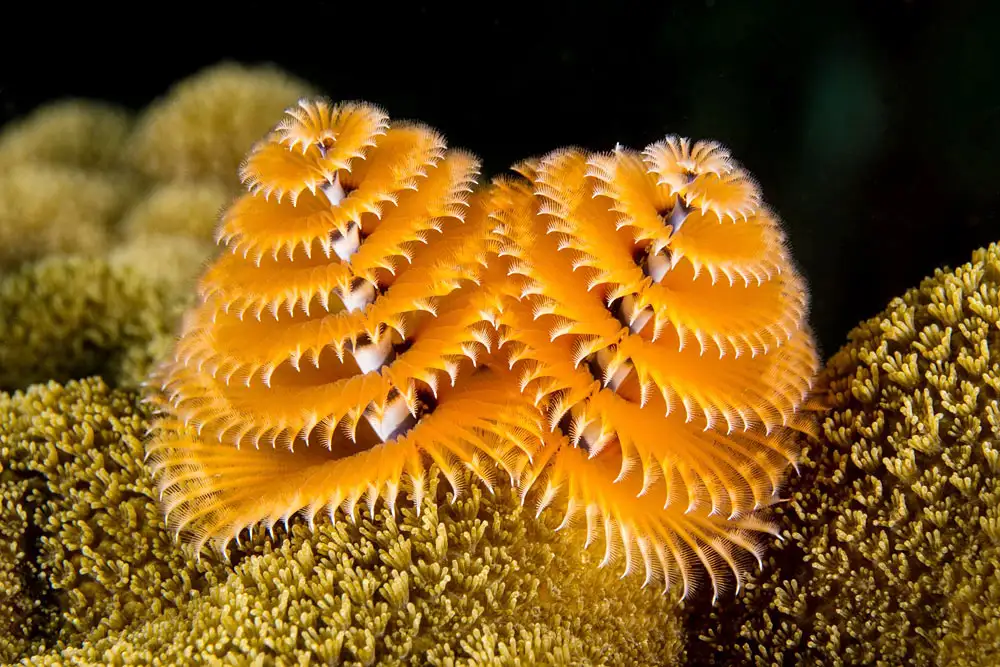Christmas Tree Worm
IUCN
LCBasic Information
Scientific classification
- name:Christmas Tree Worm
- Scientific Name:Spirobranchus giganteus
- Outline:Annelida
- Family:Serpulidae Spirobranchus
Vital signs
- length:Tube 2–4 cm (to ~5–6 cm); crown diameter 2–5 cm
- Weight:Very light; varies with tube length
- lifetime:Several years; longer on stable reefs
Feature
Sessile tube‑builder; operculum closure; colourful twin spiral crowns; coral‑associated.
Distribution and Habitat
Tropical Indo‑Pacific & Atlantic reefs, well‑lit flats/slopes/lagoons (~1–25+ m).
Appearance
White/beige calcareous tube; crowns in yellow/orange/red/blue/white; operculum with spines/coronet.
Details
Spirobranchus giganteus—the Christmas tree worm—is a tube‑dwelling serpulid polychaete with two vividly coloured, spiral radiolar crowns for filter feeding and gas exchange. After settlement it secretes acalcareous tube, remains sessile and rapidly retracts when disturbed, sealing the tube with an operculum.
Ecology & Biology
Life habit: sessile tube‑builder; only crowns and operculum are exposed.
Feeding: ciliary/mucus‑based suspension feeding on micro‑plankton and POM.
Coral association: often embedded in living coral skeletons; interactions range from commensal to mildly competitive.
Reproduction: external fertilization; planktonic larvae settle and metamorphose into adults.
Identification
Body inside a white/beige calcareous tube; crowns show diverse colours (yellow, orange, red, blue, white), sometimes different between the two spirals. The operculum may carry spines/coronet and varies geographically.
Size & Longevity
Tube length: typically 2–4 cm (up to ~5–6 cm); crown diameter 2–5 cm.
Life: generally several years, longer on stable reefs.
Range & Habitat
Widespread on tropical Indo‑Pacific and Atlantic reefs (Red Sea, Caribbean included), favouring well‑lit reef flats, slopes and lagoons around ~1–25+ m.
Roles & Threats
Roles: abundant small suspension feeders recycling particulate carbon and providing microhabitats.
Threats: reef degradation, sedimentation and pollution; mass coral bleaching indirectly affects recruitment/survival.
IUCN: marked here as Not Evaluated (NE).
FAQ
Q1. Why “Christmas tree”? The twin spiral crowns strongly resemble miniature Christmas trees and retract independently.
Q2. Can adults leave the tube? No—they are permanent tube‑dwellers; the operculum seals the tube when alarmed.
Q3. Do they harm corals? Usually minor effects; high densities can compete for surface space.
Q4. Why do they retract when I approach? They are sensitive to shadows/vibrations and retract instantly; wait and they re‑emerge.




